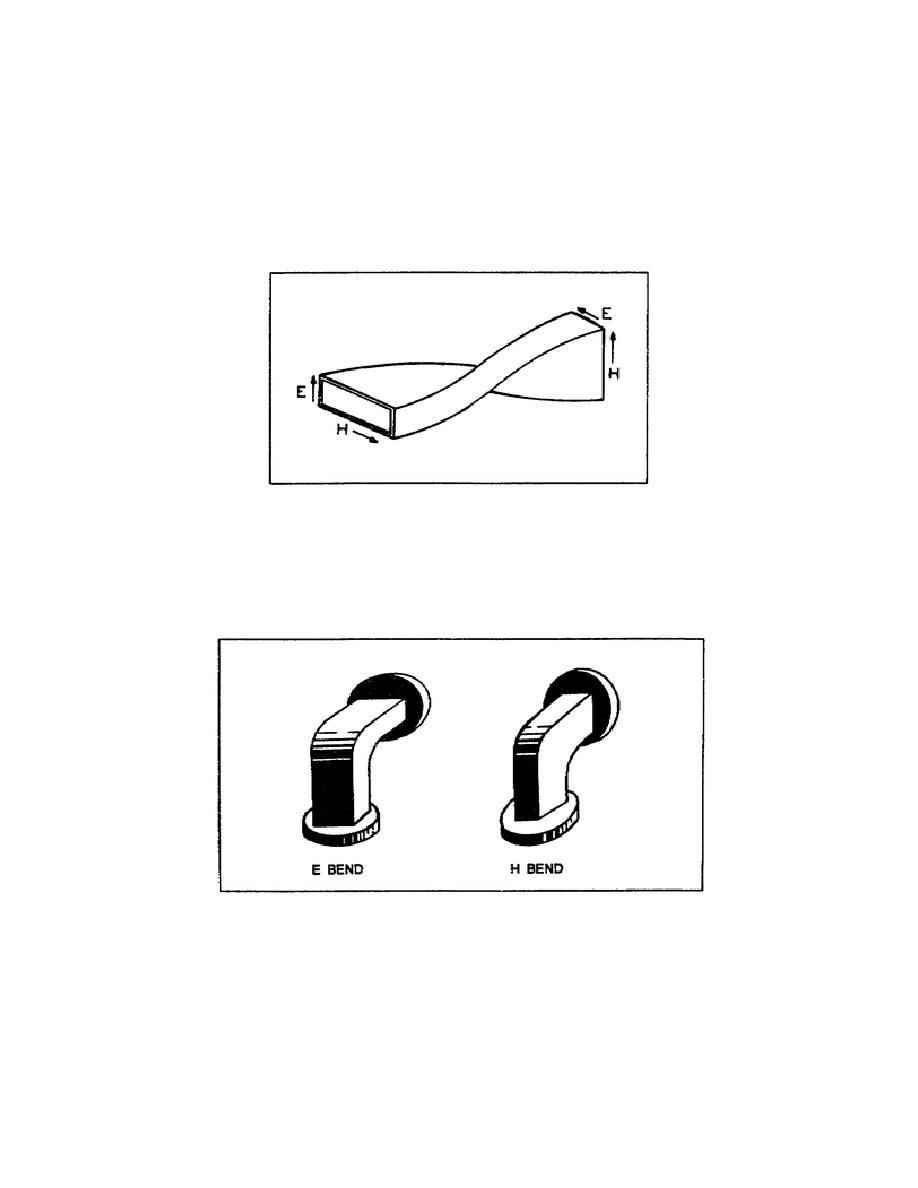
or shape of the waveguide will cause reflections; therefore, any change must be very gradual unless special
devices are used. When it is necessary to change the shape or direction of a waveguide, then bends, twists, or
terminations are used. These are sometimes called waveguide plumbing.
a.. Twisted bends. In some installations it is necessary to change the direction of the waveguide or to rotate the
electromagnetic field. When a waveguide is terminated with an antenna, the electromagnetic field may have to
be rotated so the antenna can be properly polarized. This can be done by twisting the waveguide as shown in
Figure 2-2. The twist is gradual and is extended over two wavelengths or more to prevent reflections.
Figure 2-2. Twisted section of waveguide.
b. Gradual bends. When the direction of a waveguide is changed, a gradual bend is used as shown in
Figure 2-3. Some bends may be 90 degrees and others may be more or less than 90 degrees. The radius of the
bend must be greater than two wavelengths to minimize reflections.
Figure 2-3. Gradual bends.
c. Sharp bends. Some installations may require a sharp bend as shown in Figure 2-4. The bends are bent
twice at 45 degrees, one-quarter wavelength apart.
SS0031
2-4



 Previous Page
Previous Page
